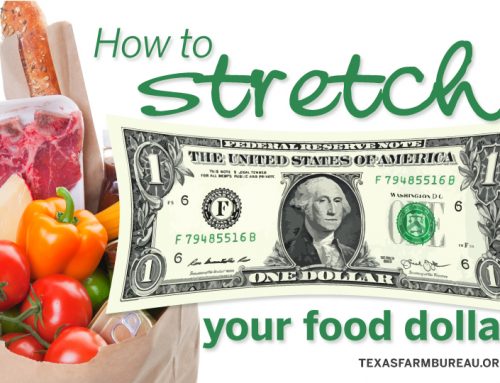By Amanda Hill
Grocery shopping for me is a precise event, one that includes a very specific list ordered by the routine route I take through the store each week. I rarely venture from my list and often throw the same products I buy week-in, week-out into the cart as a whiz through the aisles. I’m an efficient shopper—and I’m proud of it.
But, it turns out, my weekly race through the aisles may have cost me a good bit of money.
Manufacturers have found a way to sell less food for more money by downsizing food packaging. When I reach for the box of cereal—at the same price I’ve paid for months—I don’t notice that I’m actually getting two fewer ounces of product.
And it’s not just cereal boxes that are shrinking. According to this post by TheStreet.com, several manufacturers have reduced their product packaging: the Mars Company has cut its Snickers King Size candy bar from 3.7 ounces to 3.29 ounces; PepsiCo dropped the Tropicana orange juice carton from a half gallon (64 ounces) to 59 ounces; and Kraft Foods recently introduced “Fresh Stacks” of Nabisco Premium saltine crackers and Honey Maid graham crackers, which actually hold 15 percent fewer crackers than their original packaging.
Not even ice cream is immune. General Mills’ Haagen-Dazs reduced its standard pint size (16 ounces) to 14 ounces. I don’t know about you, but 12.5 percent less ice cream is a sad discovery at our house!
Food manufacturers point to higher commodity prices and transportation costs to justify smaller packages. I understand their dilemma (I actually wrote about it in one of our early Table Top posts), but I wish they would be more transparent with consumers. Surely I’m not the only one who rushes through the store, grabbing my regular items, only to notice far fewer tortilla chips as I pour them into a bowl for company.
Luckily, shoppers do have a few tools to help them make smart purchasing decisions at the store—if they’ll take a minute to slow down. For example, many grocery stores list the unit price of the food item on the shelf, along with the total price. Shoppers can use the unit price to compare the actual value of products, regardless of the total package size.
You also can look for the package weight. I’d especially recommend this if you’re used to buying the same product for a tried-and-true recipe. If your family’s famous green bean casserole calls for a 16-ounce can, make sure you’re getting what the recipe requires.
Or, you can reward companies that have refused to shrink their packages by purchasing their products. Remember the tragedy of the smaller ice cream carton? Fortunately, one Texas company is refusing to follow the herd. Blue Bell Creameries says it will stay true to its half-gallon carton with a full 64 ounces of all of its flavors. Yet another reason why Blue Bell really is the best ice cream in the country!
What about you? What food products have you noticed contain less but cost more? And, will you be eating more Blue Bell from the true half-gallon carton?











Thanks for the info Amanda! I always thought it was just me getting bigger…not the packaging getting smaller. Cheers to Blue Bell too!
Blue Bell best in taste and quantity. Still # 1 – tried, tested and true.
Rex, I completely agree! As for you, Nathan, I’m glad I could help solve your conundrum… I think?